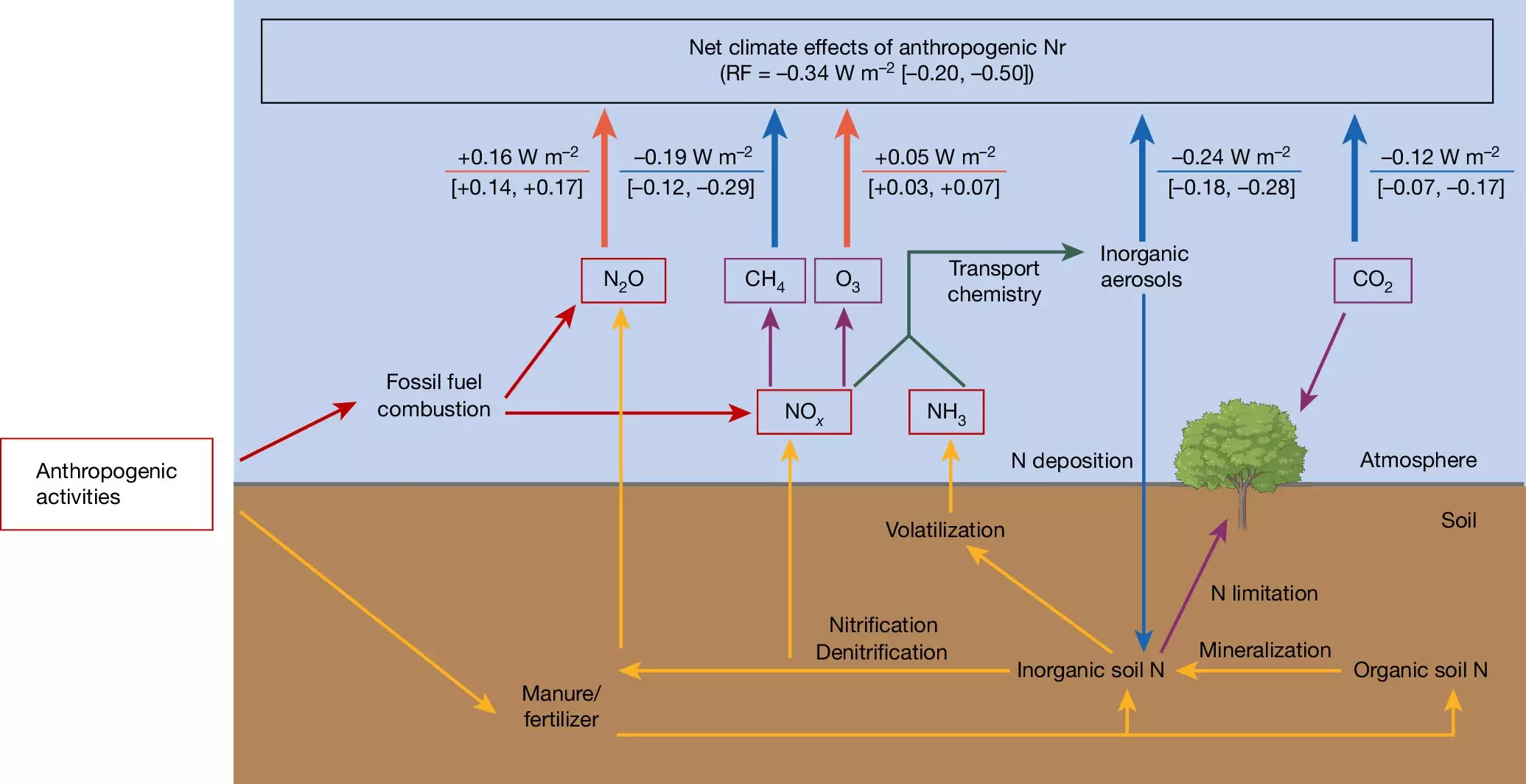In the ongoing dialogue about climate change, nitrogen emissions often find themselves casting a long and complex shadow. While they are notorious for their harmful impact on air quality, biodiversity, and the ozone layer, both industrial and agricultural applications of nitrogen have uncovered an unexpected twist: they could be contributing to global cooling. This paradox, revealed in a recent comprehensive study by an international team led by researchers from the Max Planck Institute for Biogeochemistry, illustrates the intricate relationship between nitrogen compounds and climate dynamics. It suggests a crucial reevaluation of how we perceive nitrogen and its role in our environment.
The Complicated Landscape of Reactive Nitrogen
Nitrogen is ubiquitous, composing around 78% of Earth’s atmosphere in its inert form. However, when nitrogen interacts with various environmental processes, it transforms into what scientists label as “reactive nitrogen.” This reactivity gives rise to multiple effects on climate – both warming and cooling. Two notable forms within this spectrum include nitrous oxide and nitrogen oxides. While nitrous oxide is alarmingly efficient as a greenhouse gas—approximately 300 times more potent than CO₂ and contributing significantly to global warming—nitrogen oxides have a cooler narrative. They are predominantly produced during fossil fuel combustion, leading to the formation of fine particulate matter in the atmosphere which can shield sunlight and thus promote cooling.
Similarly, ammonia, which originates from agricultural practices like the application of fertilizers and manure, offers its dual message: it can enhance plant growth, which in turn absorbs more atmospheric CO₂, contributing to a cooling effect. It is this delicate balance of nitrogen’s impact on climate that emphasizes the need for a nuanced understanding of environmental processes.
Quantifying the Cooling Effect
The study by Zaehle and Gong dives deep into the quantification of how anthropogenic nitrogen emissions collectively affect climate. Through modeling the complex dynamics within the nitrogen cycle and its interactions with the carbon cycle, they found that these reactive forms of nitrogen result in a net negative radiative forcing of approximately -0.34 watts per square meter. In a world where the man-made contributions to global warming add about 2.7 watts per square meter, the cooling effect of nitrogen might seem like a silver lining in the dark cloud of climate change.
However, this positive note can easily lead to complacency. Rather than using the findings as a justification to increase nitrogen input into ecosystems, it should serve as a stark reminder of the multidimensional consequences of such actions. The apparent cooling effect does not imply that our relationship with nitrogen is devoid of hazardous consequences.
Health, Biodiversity, and Ozone Layer Concerns
While the researchers indicate that nitrogen could provide a cooling buffer against climate change, this should not overshadow the significant damage it inflicts on other critical aspects of our environment and wellbeing. Nitrogen emissions are linked to respiratory issues in humans and can drive biodiversity loss by disrupting natural ecosystems. In addition to contributing to those health hazards, these emissions exacerbate ozone layer depletion, thus aggravating the very climate issues they seem to rectify.
Zaehle rightly cautions against viewing nitrogen as an environmental savior. A balanced perspective is essential. The findings must catalyze discussions on finding a middle ground between harnessing nitrogen’s agricultural benefits and mitigating its climate effects. Enhanced agricultural practices aimed at optimizing nitrogen usage could reduce the harmful outputs of nitrous oxide, simultaneously benefiting human health and environmental integrity.
Innovative Solutions and Future Directions
Approaching nitrogen management requires an intersection of science, agricultural policy, and environmental stewardship. It entails leveraging innovative practices that could optimize nitrogen’s role as a fertilizer while significantly curbing its negative outcomes. One possible direction is investing in technology and research that emphasizes precision agriculture, which tailors nutrient applications based on specific plant needs, thereby minimizing excess nitrogen runoff into the environment.
Moreover, the findings accentuate the urgency for a holistic reduction of greenhouse gas emissions alongside a proportional decrease in reactive nitrogen inputs. Climate strategies need to be synergistic; focusing solely on one aspect of emissions may inadvertently exacerbate others. Therefore, coordinated efforts among policy-makers, scientists, and the agricultural sector are vital.
As we navigate the challenges of climate change, the intricate web of interactions between nitrogen and climate warrants a deeper dive. By understanding this relationship better, we are more equipped to draft effective policies that not only address the symptoms of climate change but also the root causes, thereby fostering a sustainable and healthier future for our planet.


Leave a Reply